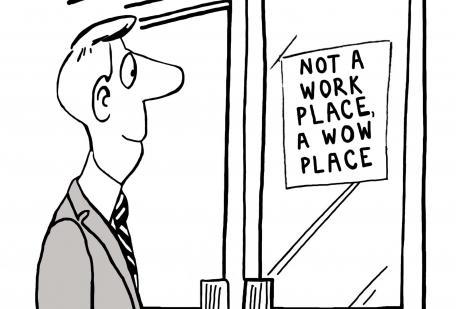
According to a survey by Bain & Company, of 365 companies in Europe, Asia and North America, 81 percent believe that brands without a high-performing culture will never get beyond mediocrity. In other words, it is the culture of an organization that helps to drive it forward towards success.
Your corporate culture will dictate everything from what your employees expect when they arrive in the morning to how you decide which new hire to select. It will influence employee morale, retention rates and job satisfaction. It is important for brands to build a culture that will positively impact their organizational success. Here is how to build a culture that will foster these goals.
1. Decide what culture should look like, and communicate the ideals clearly
Think about what elements in the past have positively and negatively impacted the business. The culture should align with the brand's values and ideals, so review mission statements and discuss the business's vision with veterans of the organization and other c-suite leaders to start putting the desired culture into words.
Once the culture has been determined, there should be a clear effort to communicate and implement these concepts throughout the organization. This means developing policies that encourage the adjustments, such as new dress code guidelines, scheduling policies or budget lines for staff team-building exercises. Hold staff meetings to let everyone know about the changes and the goals that the organization hopes to achieve with their ideas.
2. Leadership needs to guide culture development
The leaders of the organization will have a considerable amount of influence over how well the desired culture is adopted by the employees beneath them. If the company tries to promote itself as family-friendly by offering flexible scheduling, but the CEOs never take advantage of these benefits—or even are slow to promote those who do take advantage of this option— then the office culture will quickly communicate the opposite of the desired effect.
On the other hand, if the leaders themselves take advantage of the flexible scheduling and make an effort to demonstrate the value of every employee, including those using flexible scheduling, then the corporate culture will reflect the desired values.
Tom Walter, the CEO of Tasty Catering in Chicago, also recommends that businesses remember that staff are not just productivity units. Instead, let the staff know that they matter by listening to their opinions.
3. Offer opportunities for team bonding
Encouraging camaraderie amongst employees helps everyone grow together. Instead of just being a group of people with related jobs under the same roof, the employees can begin to bond. This helps build an efficient productive team that is capable of reaching tremendous heights.
There are a variety of actions you can take to encourage bonding between your employees. For example, brands can allow flexible hours for employees to relax and enjoy themselves sometimes. Cutting the workday early by a few hours and having everyone join in a team-building exercise, such as participating in a trivia social hour, can be a great way to raise spirits.
4. Let culture motivate hires and focus on building a complementary team
Once the team culture has been established, it is important to let those values dictate everything from who is hired to how policies and procedures are developed. You want to focus on hiring people who fit well with your established culture. People who are not good fits can be disruptive and make it harder to reach goals.
It is also important to make sure that hires reflect the complementarity of a strong team. Even though everyone should reflect the same values and be able to work within that paradigm, it is also important to make sure that skill sets complement each other and that the hires bring unique strengths so that the team has depth.
5. Build the culture among employees
From the moment a new employee joins your organization, you should integrate them into the work culture. Develop an onboarding procedure that helps the new employee understand the values that the organization wants to promote and their role in creating this culture within the work environment and when they interact with customers. The culture should become part of the greater brand reputation so that everyone knows what to expect from this organization from the beginning.
Building a strong corporate culture is an important part of driving an organization forward. The culture will help bond the organization together, making expectations and business values clear to anyone who encounters the group. By encouraging the purposeful building of such a culture, organizations can prepare themselves for the future.

